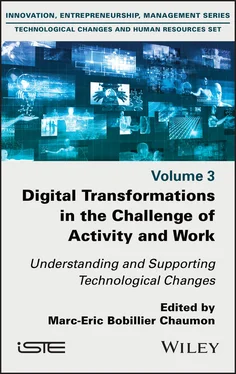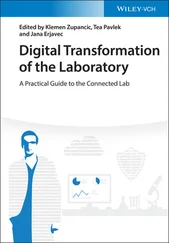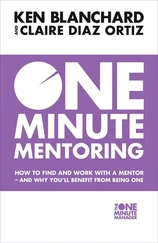Digital Transformations in the Challenge of Activity and Work
Здесь есть возможность читать онлайн «Digital Transformations in the Challenge of Activity and Work» — ознакомительный отрывок электронной книги совершенно бесплатно, а после прочтения отрывка купить полную версию. В некоторых случаях можно слушать аудио, скачать через торрент в формате fb2 и присутствует краткое содержание. Жанр: unrecognised, на английском языке. Описание произведения, (предисловие) а так же отзывы посетителей доступны на портале библиотеки ЛибКат.
- Название:Digital Transformations in the Challenge of Activity and Work
- Автор:
- Жанр:
- Год:неизвестен
- ISBN:нет данных
- Рейтинг книги:4 / 5. Голосов: 1
-
Избранное:Добавить в избранное
- Отзывы:
-
Ваша оценка:
- 80
- 1
- 2
- 3
- 4
- 5
Digital Transformations in the Challenge of Activity and Work: краткое содержание, описание и аннотация
Предлагаем к чтению аннотацию, описание, краткое содержание или предисловие (зависит от того, что написал сам автор книги «Digital Transformations in the Challenge of Activity and Work»). Если вы не нашли необходимую информацию о книге — напишите в комментариях, мы постараемся отыскать её.
Digital Transformations in the Challenge of Activity and Work — читать онлайн ознакомительный отрывок
Ниже представлен текст книги, разбитый по страницам. Система сохранения места последней прочитанной страницы, позволяет с удобством читать онлайн бесплатно книгу «Digital Transformations in the Challenge of Activity and Work», без необходимости каждый раз заново искать на чём Вы остановились. Поставьте закладку, и сможете в любой момент перейти на страницу, на которой закончили чтение.
Интервал:
Закладка:
Moraes, T.M., de Andrade, A.F., and Paiva, W.S. (2016). Virtual reality for the treatment of posttraumatic disorders. Neuropsychiatric Disease and Treatment , 12, 785–786.
Morand, O., Cahour, B., Bobillier Chaumon, M.E., and Grosjean, V. (2019). Overload of technological connections for communicating at work. In Proceedings of the 20th Congress of the IEA 2018. Bagnara S., Tartaglia R., Albolino S., Alexander T., and Fujita Y. (eds). Springer, Cham.
Moser, T., Hohlagschwandtner, M., Kormann-Hainzl, G., Pölzlbauer, S., and Wolfartsberger, J. (2019). Mixed reality applications in industry: Challenges and research areas. In SWQD 2019: Software Quality: The Complexity and Challenges of Software Engineering and Software Quality in the Cloud , Winkler, D., Biffl, S., and Bergsmann, J. (eds). Springer, Cham, Switzerland.
Norman, D. (1994). Les artefacts cognitifs. Raisons pratiques , 4, 15–34.
Patel, A.V., Bernstein, L., Deka, A., Feigelson, H.S., Campbell, P.T., Gapstur, S.M., Colditz, G.A., and Thun, M.J. (2010). Leisure time spent sitting in relation to total mortality in a prospective cohort of US adults. American Journal of Epidemiology , 172(4), 419–429.
Popma, J. (2013). The Janus Face of the ‘New Ways of Work’: Rise, Risks and Regulation of Nomadic Work . ETUI, Brussels.
Rabardel, P. (1995). Les hommes et les technologies . Armand Colin, Paris.
Seppänen, L., Kloetzer, L., and Riikonen, J. (2017). Encourager la réflexion en chirurgie robotique : l’autoconfrontation croisée comme instrument de développement du travail interprétatif dans un environnement technologique complexe. Psychologie du travail et des organisations , 23(2), 117–136.
de Terssac, G. and Bazet, I. (2007). Les TIC-TAC de la rationalisation : un travail d’organisation. In La rationalisation dans les entreprises par les technologies coopératives , de Terssac, G., Bazet I., and Rapp L.L. (eds). Octarès Editions, Paris.
Vacherand-Revel, J. (2017). Le travail en équipe à l’ère de sa médiatisation numérique : figures actuelles de l’innovation organisationnelle. Psychologie du travail et des organisations , 23(2), 85–88.
Vayre, É. (2019). Les incidences du télétravail sur le travailleur dans les domaines professionnel, familial et social. Le travail humain , 82(1), 1–39.
Wannenmacher, D. (2019). Impacts et enjeux du robot chirurgical dans les blocs opératoires : passer des compétences techniques individuelles aux compétences non-techniques collectives. Journal de gestion et d’économie de la santé , 4(4), 316–334.
Wen, C.P. and Wu, X. (2012). Stressing harms of physical inactivity to promote exercise. The Lancet , 380(9838), 192–193.
Zouinar, M. (2019). Théories et principes de conception des systèmes d’automesure numériques : de la quantification à la régulation distribuée de soi. Réseaux , 216(4), 83–117.
Zouinar, M. (2020). Évolutions de l’Intelligence Artificielle : quels enjeux pour l’activité humaine et la relation humain-machine au travail ? Activités , 17(1) [Online]. Available: http://journals.openedition.org/activites/4941[accessed 26 April 2020].
Chapter written by Marc-Eric BOBILLIER CHAUMON.
1 1 In companies, these systems are used (1) to relieve employees of repetitive cognitive tasks (e.g. in a bank branch, IBM’s Watson system automatically answers customers’ emails to relieve the customer advisors’ relational work) or (2) to support or even replace them in complex tasks. Examples include navigational aid systems (automatic pilot in aircraft) or expert systems in the banking field (to evaluate the best financial investments) or in the legal field (for example, finding the best case law by compiling thousands of applied legal decisions).
2 2 Today, more than 98% of the information produced by our companies is stored in digital form, whereas in 1986 only 1% of data was in this format.
3 3 The name of the British company that has been accused of influencing the vote in the 2016 US elections through the improper use of personal data from tens of millions of Facebook accounts.
2
Collaborative Work Platforms: Challenges for Business Development
This chapter is based on research that addresses the psychosocial–organizational issues that can arise from the use of a digital enterprise social network (DESN). After defining the hybrid modalities that characterize contemporary work, we will demonstrate that the activity of networking reconfigures the engagement and activity structuring in asynchronous and distributed collaborations. We will rely on the concept of shared collaborative intentionality to qualify these new modalities of engagement and to characterize the new collaborative skills developed by professionals in order to increase their power to act.
2.1. Introduction
Collaborative platforms and digital enterprise social networks (DESNs) bring together a set of technologies (ICTs) (wikis, forums, instant messaging, micro-blogs, document sharing and content co-design spaces). They are similar to the digital social networks used privately (Facebook, Twitter, LinkedIn, etc.), and constitute new types of technologies. These are dedicated to communication and collaboration between companies through the development of new communication modalities, the creation of remote content, the sharing of opinions and the capitalization of information. Two objectives are targeted: (1) to optimize interactions; and (2) to facilitate collaborations between actors who are physically distant or who cannot collaborate at the same time (Zacklad 2006; Barville-Deromas 2014).
In this chapter, we will continue to use the term digital enterprise social network (DESN). As a technical–organizational device, the DESN aims to virtualize exchanges and sharing while supporting asynchronous collaborative co-writing mechanisms (Zacklad 2015).
2.2. Two organizational challenges: empowering digital transformations and changing work practices
DESNs began to appear in companies in 2008, in a context of recurring organizational change and digital transformations (Cohendet et al. 2003; Teulier and Lorino 2005; Engelstätter and Sarbu 2013). Their implementation has accelerated since 2015. They are used in so-called hybrid work organizations, that is, those that combine pyramidal and transversal operations (Engeström 2008a). This hybrid aspect of work organization aims to develop the network effect (a development of efficiency through the decentralization of information control centers). It is a new model of success that combines economic performance and the knowledge economy. In fact, the organization of daily work is based on a multi-centered (several activities in parallel) and reticular (networked, without hierarchical links) structure. Two major changes in the organization of daily work are emerging: the co-configuration of work and the mobilization of social capital.
2.2.1. The co-configuration of work
The co-configuration of work consists of the growing need to make very different actors collaborate, those that are both internal and external to the company. The aim is to ensure the production of a service or product that is tailored to the needs and desires of customers (Engeström 2008b). First applied to the economic context, the co-configuration of work has gradually integrated into companies, instilling new collaborative dynamics that are aimed at creating individual and collective values.
From a work organization point of view, co-configuration requires a great ability to collaborate in a highly variable environment, to adapt, to make it look good (customize) and to be transparent. Professionals must therefore juggle different work purposes (work objects) on a daily basis: responding to the requests of superiors, achieving the objectives set as a team and, at the same time, getting involved in cross-functional work groups with colleagues who do not belong to the same team and with purchasers who are not hierarchical superiors (Edwards 2011).
Читать дальшеИнтервал:
Закладка:
Похожие книги на «Digital Transformations in the Challenge of Activity and Work»
Представляем Вашему вниманию похожие книги на «Digital Transformations in the Challenge of Activity and Work» списком для выбора. Мы отобрали схожую по названию и смыслу литературу в надежде предоставить читателям больше вариантов отыскать новые, интересные, ещё непрочитанные произведения.
Обсуждение, отзывы о книге «Digital Transformations in the Challenge of Activity and Work» и просто собственные мнения читателей. Оставьте ваши комментарии, напишите, что Вы думаете о произведении, его смысле или главных героях. Укажите что конкретно понравилось, а что нет, и почему Вы так считаете.












